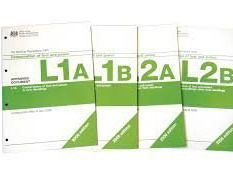Big Changes to the Regulations are Coming into the Fore.

New homes will have to produce around 30% less carbon emissions from 2022. (See Sam Pollard's article in June 2023 as to implementation periods.)
What’s going on?
These changes are stop-gap measures to improve energy efficiency in housing regulations ahead of the Future Homes and Buildings Standards (FHBS) introduction in 2025, which will require more significant cuts to carbon emissions. The aim of these measures is to make the changes in 2025 less severe for builders and also to help cut carbon emissions in the meantime.
These changes mean compliance with the new with the new measures are mandatory after June 2022. Guidance on ways to meet the building regulations can be found in the Approved Documents area on the GOV.UK website.
Five new Approved Building Regulation Documents, including uplifts to Part L (fuel and power) and Part F (ventilation), which will come into effect from 15 June 2022, and will have a marked impact on new homes and existing homes. In new builds including self builds the new regulations are intended to mitigate the risk of overheating. In existing homes there will be a reduction in energy use and carbon emissions during home improvements.
To cut a long story short….
New homes
-There will be a 30% cut on emissions from new homes, as well as a 27% cut on new buildings including offices and shops
-An entirely new Building Regulation and Approved Document O has been set up to mitigate the risk of overheating in new homes. One key inclusion is that maximum limits to the amount of glazing will be set on new residential buildings.
-New homes will adopt the Fabric Energy Efficiency Standard to measure energy efficiency.
-There will be a maximum flow temperature requirement of 55°C for new and replacement heating systems, as part of the Part L uplift
-An appendix has been included in Part L which sets out a good practice specification for a home built with a heat pump.
Existing homes
-Uplifts to Part L & Part F of the Building Regulations have set new minimum standards for fabric efficiency. For example, there will be a new efficiency metric for the whole house calculation method for new extensions. This means new extensions are no longer regarded in isolation but as part of the whole house in terms of efficiency.
-There will be a requirement for new or replacement heating system designs to accept low-carbon heating in future, including integrating the latest Ecodesign appliance benchmarks. The government also published.
Approved Document S, which provides technical guidance regarding the installation of electric car charge points in our homes.
When does this actually start to apply?
If a building notice, initial notice, or full plans are submitted before 15 June 2022, they will still be considered under the previous regulations, provided building work starts before 15 June 2023.
For new housing developments that gained planning permission under the old regulations, work must have been started on a unit by 15 June 2023 or the new regulations will apply. For work that falls under these new regulations, but are not subject to notices or applications, there are no transitional arrangements. This means the new rules must be followed from 15 June 2022.
So there you go. One thing is for sure..... More cost.